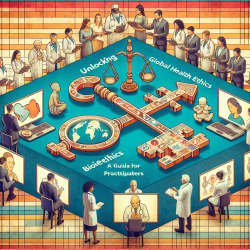Introduction
In the ever-evolving field of speech-language pathology, the integration of advanced scientific techniques can significantly enhance therapeutic outcomes. One such promising avenue is the application of dielectric spectroscopy and optical density measurement, as explored in the research article "Dielectric Spectroscopy and Optical Density Measurement for the Online Monitoring and Control of Recombinant Protein Production in Stably Transformed Drosophila melanogaster S2 Cells". This study, while primarily focused on bioprocess engineering, provides insights that can be adapted to improve online therapy services, such as those provided by TinyEYE.
Understanding Dielectric Spectroscopy and Optical Density Measurement
Dielectric spectroscopy involves using an alternating electric field to measure the dielectric properties of a suspension, providing insights into the quantity of intact cells. Optical density measurement, on the other hand, assesses the number of light-scattering particles in a medium. These techniques, when combined, offer a robust framework for real-time monitoring and control of biological processes.
Applications in Online Therapy
While the original study focuses on recombinant protein production, the principles can be translated into the realm of online therapy. Here’s how:
- Real-Time Monitoring: Just as these techniques allow for real-time monitoring of cell growth and viability, they can be adapted to monitor a child's progress during therapy sessions. This can lead to more immediate adjustments and tailored interventions.
- Data-Driven Decisions: By integrating these measurements, therapists can make more informed, data-driven decisions about the effectiveness of certain therapeutic approaches, similar to how the study pinpointed optimal timings for induction and harvest in cell cultures.
- Enhanced Outcomes: The study demonstrated a five-fold increase in productivity through optimal control strategies. Similarly, by applying these principles, therapy outcomes can be significantly enhanced, leading to better progress for children.
Encouraging Further Research
For practitioners in the field of speech-language pathology, this study serves as a call to action to explore and integrate advanced monitoring techniques into therapeutic practices. By doing so, we can ensure that our interventions are not only effective but also efficient, maximizing the potential for positive outcomes in children.
Conclusion
As we strive to improve therapeutic outcomes for children, the integration of scientific advancements such as dielectric spectroscopy and optical density measurement holds great promise. By embracing these technologies, practitioners can enhance their ability to monitor, adjust, and optimize therapy in real-time, leading to better, data-driven outcomes.
To read the original research paper, please follow this link: Dielectric Spectroscopy and Optical Density Measurement for the Online Monitoring and Control of Recombinant Protein Production in Stably Transformed Drosophila melanogaster S2 Cells.










